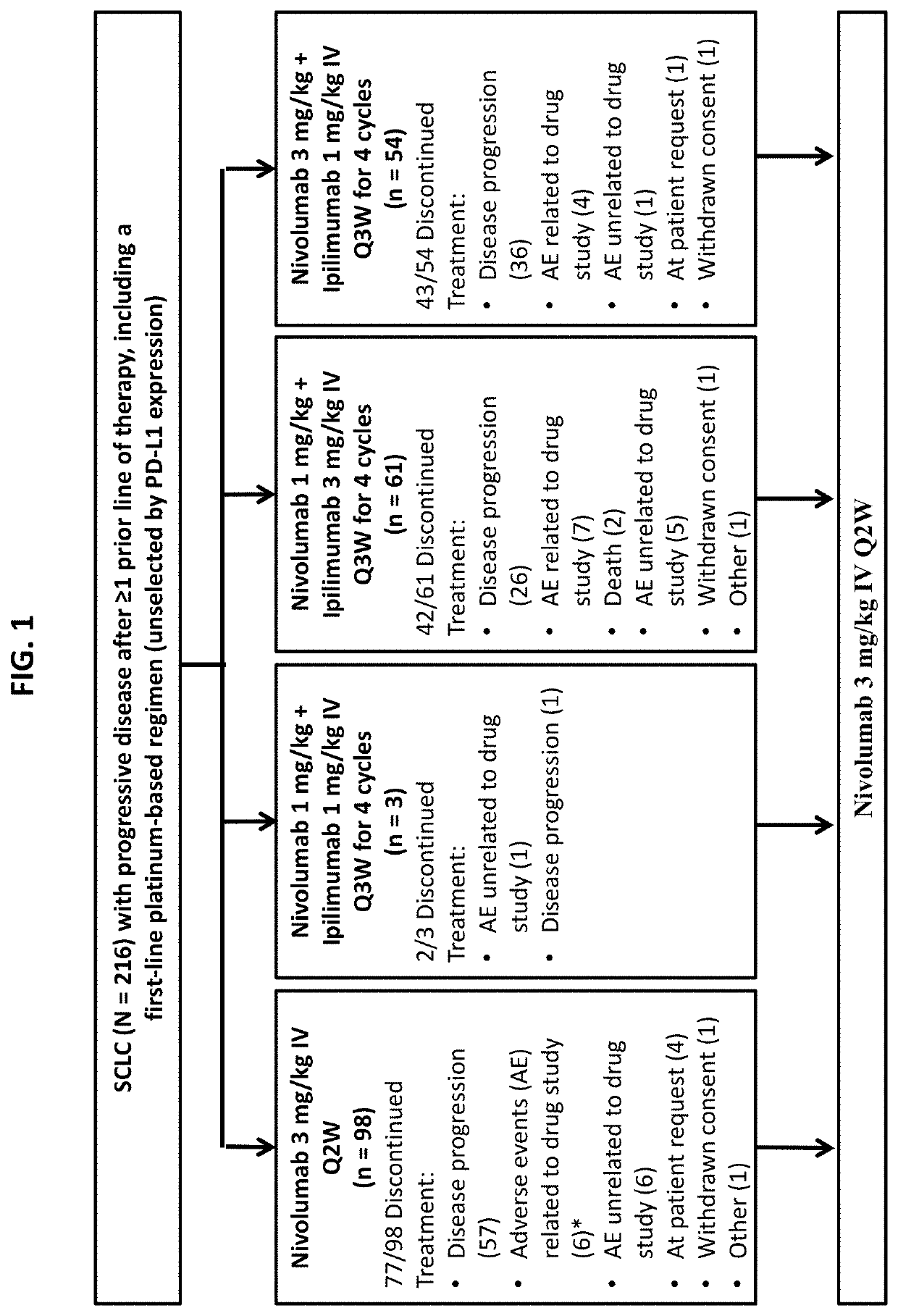Method of treating lung cancer
a lung cancer and tumor technology, applied in the field of methods, can solve the problems of poor survival, widespread metastases, and inability to know whether this combination of immunoregulatory antibodies would be similarly effective, and achieve the effect of inhibiting pd-1 activity
- Summary
- Abstract
- Description
- Claims
- Application Information
AI Technical Summary
Benefits of technology
Problems solved by technology
Method used
Image
Examples
example 1
[0207]Small-cell lung cancer (SCLC), which accounts for approximately 14% of all lung cancers, is strongly associated with tobacco use and has high mutation rates without known oncogenic drivers. Most patients present with extensive-stage disease characterized by widespread metastases and poor survival. Although 35% to 86% of patients respond to first-line chemotherapy, disease progresses rapidly, and outcomes with second-line treatment are poor.
[0208]Standard first-line chemotherapy for SCLC is a platinum-etoposide doublet, with topotecan as second-line therapy in the United States (US) and European Union (EU) and amrubicin as second-line therapy in Japan. Though response rates with topotecan are 23% and 9% for platinum-sensitive and platinum-resistant / refractory patients, respectively, they are not durable.
[0209]Nivolumab, a fully human IgG4 programmed death 1 (PD-1) immune-checkpoint-inhibitor antibody, significantly improved overall survival and had a favorable safety profile co...
example 2
[0252]The phase 1 / 2 clinical trial detailed in Example 1 has been expanded to include a randomized cohort to further evaluate nivolumab as monotherapy or in combination with ipilimumab in patients with SCLC whose disease progressed after platinum-based therapy. Here, we report an interim descriptive analysis of the SCLC randomized cohort.
Results
[0253]Patients with SCLC, having received 1 or 2 prior platinum-containing treatment regimens, were assigned to one of the following treatment groups in the randomized cohort: nivolumab as monotherapy at 3 mg per kilogram of body weight administered intravenously every 2 weeks, or combination treatment of nivolumab plus ipilimumab administered intravenously every 3 weeks for 4 cycles, at nivolumab 1 mg / kg and ipilimumab 3 mg / kg, followed by 3 mg / kg of nivolumab every 2 weeks. A total of 242 patients were randomized 3:2 into the nivolumab monotherapy treatment group (n=147) or the nivolumab and ipilimumab combination therapy treatment group (n...
PUM
| Property | Measurement | Unit |
|---|---|---|
| body weight | aaaaa | aaaaa |
| body weight | aaaaa | aaaaa |
| pH | aaaaa | aaaaa |
Abstract
Description
Claims
Application Information
 Login to View More
Login to View More - R&D
- Intellectual Property
- Life Sciences
- Materials
- Tech Scout
- Unparalleled Data Quality
- Higher Quality Content
- 60% Fewer Hallucinations
Browse by: Latest US Patents, China's latest patents, Technical Efficacy Thesaurus, Application Domain, Technology Topic, Popular Technical Reports.
© 2025 PatSnap. All rights reserved.Legal|Privacy policy|Modern Slavery Act Transparency Statement|Sitemap|About US| Contact US: help@patsnap.com



